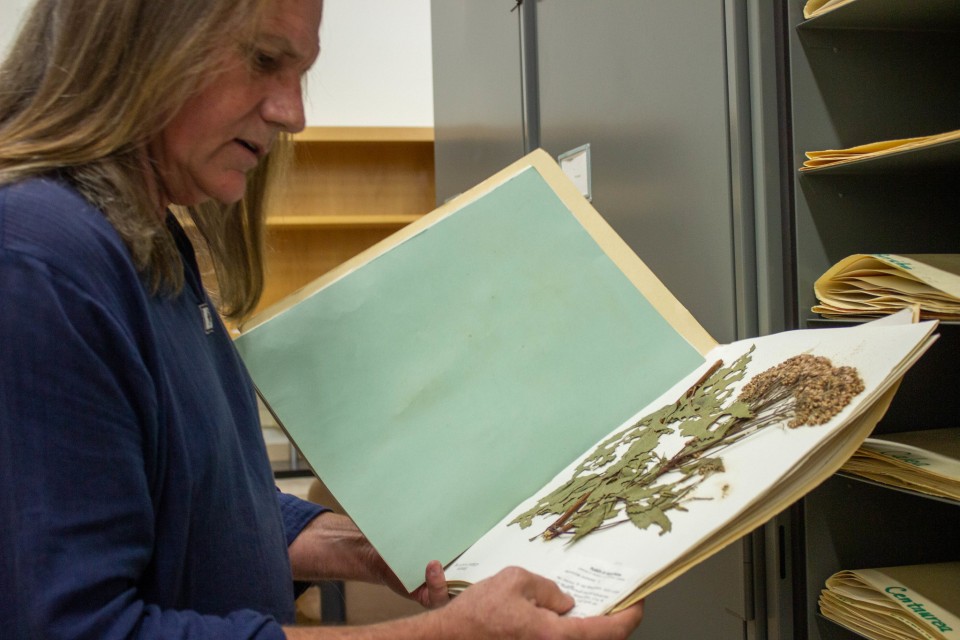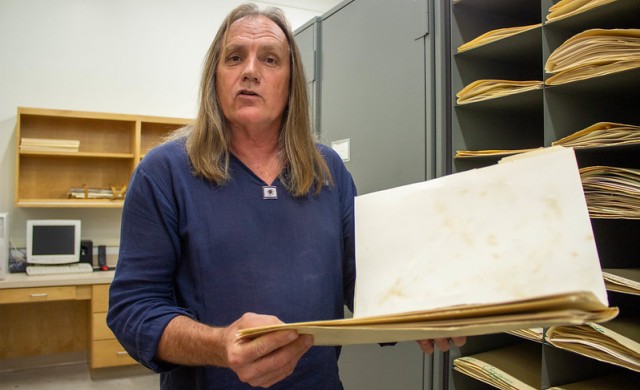By News and Internal Communications
By Justin Elizalde & Karen Villarreal
RIO GRANDE VALLEY, TEXAS – UTRGV and the Rio Grande Valley sit in a special part of the world, where a narrowly distributed, unique biota known as the Tamaulipan Biotic Province (TBP) encompasses an area from South Texas into Northeastern Mexico.
It is home to a broad variety of species found nowhere else in the world, but many of the creatures of the region and their exceptional communities are critically endangered and already have lost more than 95 percent of their original cover to urban sprawl and agriculture.
Dr. Andrew McDonald, professor of biology at UTRGV, had never had a chance to formally catalogue the plant diversity of the TBP. But a recent one-year grant will help McDonald and researchers in Mexico collaborate to share data and prioritize conservation efforts.
NO PLACE LIKE HOME
The TBP stretches from eastern parts of the state of Coahuila, Mexico, east to the northern half of Tamaulipas, and into the United States through portions of South Texas.
“What we have in the TBP is diversity,” McDonald said. “Tropical America comes up to the Rio Grande Valley. We used to have tropical forests in the Valley in the guise of native palm forests – like those seen in the Sabal Palm Sanctuary and the Montezuma cypress forests,” he said.
The health of the TBP is of concern to McDonald, an ethnobotanist who studies the practical use of plants in human civilization. His area of study is crucial to conservation, as plants are the biological foundation of all terrestrial ecosystems, he said.
Among the critically threatened plants he studies are the Montezuma cypress (also known as the Mexican Cypress, Ahuehuete and Sabino), a native redwood tree native to the Valley. Today, fewer than 100 remain.
The last Montezuma cypress forest in the Rio Grande Valley sits in the heart of Brownsville and recently was declared a city park; the remaining trees are spread out along the banks of the river and near some resacas.
“It produces a fantastic wood – very strong and resistant to pests and degradation – so they were cut down,” McDonald said. “We’ve lost so much and have hardly a chance to study it.”
SEEDS OF SYNERGY
McDonald and his colleague, Dr. Arturo Mora-Olivo, director of the Institute of Applied Ecology at the Universidad Autonóma de Tamaulipas (UAT), were awarded $67,130 from ConTex to help germinate collaboration between the two institutions.
ConTex is a joint initiative between The University of Texas System and Mexico’s CONACYT (the equivalent of the National Science Foundation in the U.S.), and aims to promote binational efforts for academic and research collaborations.
This grant will provide researchers at both institutions a chance to work with a cooperative database of biodiversity between UTRGV and UAT in the form of a cross-border digital herbarium – a collection of preserved plant specimens – specific to plants of the TBP.
“When I got to UTRGV, after working for a number of years with the UAT, that was one of my main goals,” McDonald said. “I wanted to establish a link with our compañeros (partners) to the south. It has never been developed. We need more data and plant collection along the border. Currently, both institutions have a modest amount of data on complex conservation issues and the native flora.”
BUILDING A DIGITAL BRIDGE
“The idea is to get the two herbaria together and database all of our hard data, which is in the form of specimens,” McDonald continued. “Every specimen has a label with the date, the site, and ecological information.”
Researchers will now have the technology to database the information and allow access to it from both countries. Symbiota, an open-source software developed by the National Science Foundation, allows biological communities to come together and create information resources and investigative programs that serve their communities. McDonald said the program will allow him and Mora-Olivo to network and share data.
“With a modest sum, we’re going to be able to database a majority of the plant collection,” McDonald said. “We’re going to have international workshops to get the institutions collaborating.”
Another goal of the project is to bring together students from UTRGV and UAT to have conversations and work on joint projects.
“We’re using this as a model to expand this network from Tamaulipas and Edinburg, to include herbaria in northeast Mexico’s Linares, Saltillo, Monterrey and Tampico areas. We are spearheading this for northeast Mexico and the United States,” McDonald said.
NOW AND FOR THE FUTURE
When the groundwork is complete, the database McDonald and Mora-Olivo are building will provide a baseline of information to help leaders make reasonable and informed decisions about conservation activities – for example, what is prioritized in terms of landscapes, plants and animals.
“In conservation, almost all the activities focus on birds and mammals,” McDonald said. “That’s a reckless way to approach these issues because plants are the habitat, and habitats define animal abundance and diversity. If we conserve our diversity of healthy plant communities, that’s the closest assurance you have to conserving animals because they depend on specific plants.”
ABOUT UTRGV
The University of Texas Rio Grande Valley (UTRGV) was created by the Texas Legislature in 2013 as the first major public university of the 21st century in Texas. This transformative initiative provided the opportunity to expand educational opportunities in the Rio Grande Valley, including a new School of Medicine and a School of Podiatry, and made it possible for residents of the region to benefit from the Permanent University Fund – a public endowment contributing support to the University of Texas System and other institutions.
UTRGV has campuses and off-campus research and teaching sites throughout the Rio Grande Valley including Brownsville (formerly The University of Texas at Brownsville campus), Edinburg (formerly The University of Texas-Pan American campus), Harlingen, Weslaco, McAllen, Port Isabel, Rio Grande City and South Padre Island. UTRGV, a comprehensive academic institution, enrolled its first class in the fall of 2015; the School of Medicine welcomed its first class in the summer of 2016, and the School of Podiatric Medicine in the fall of 2022.


